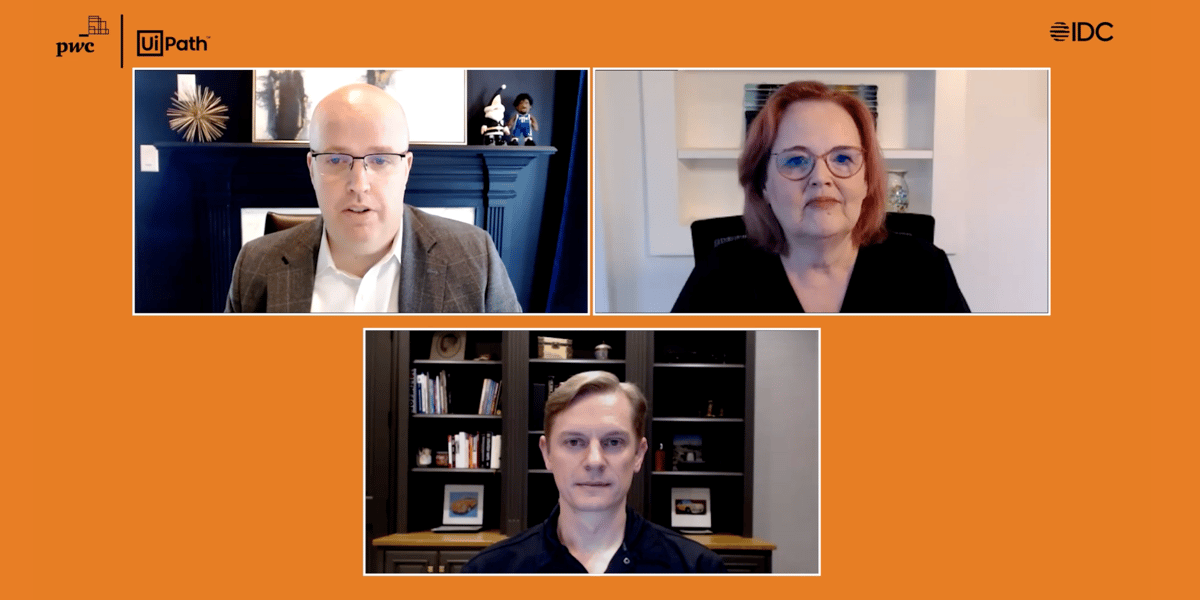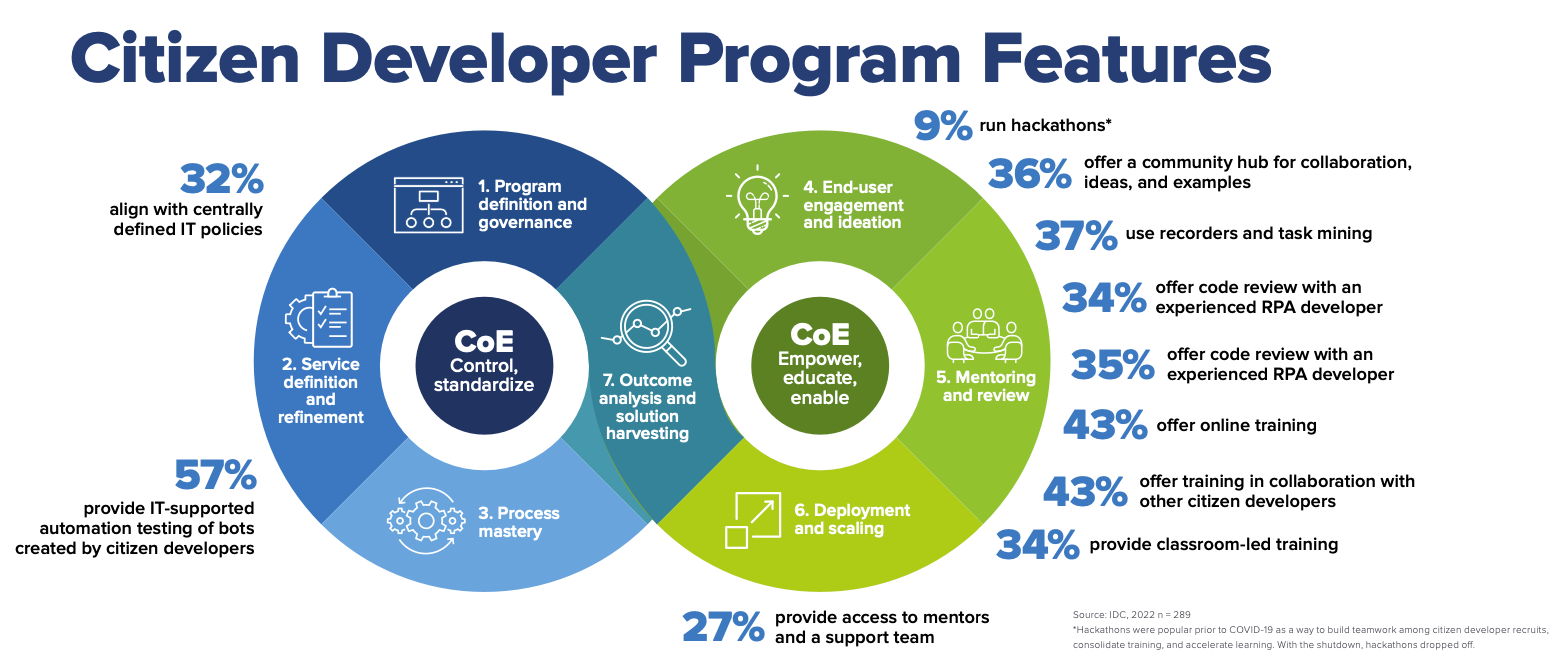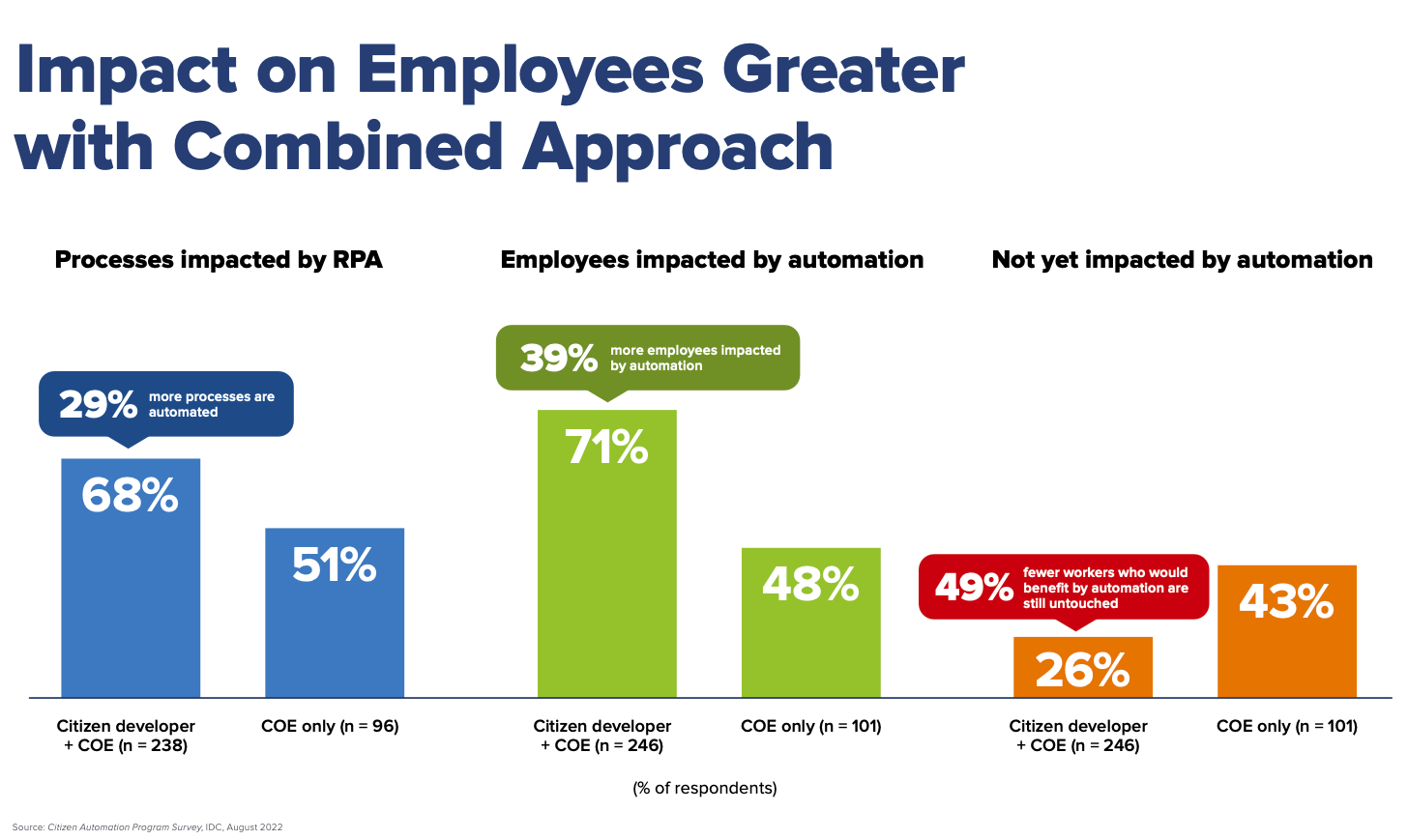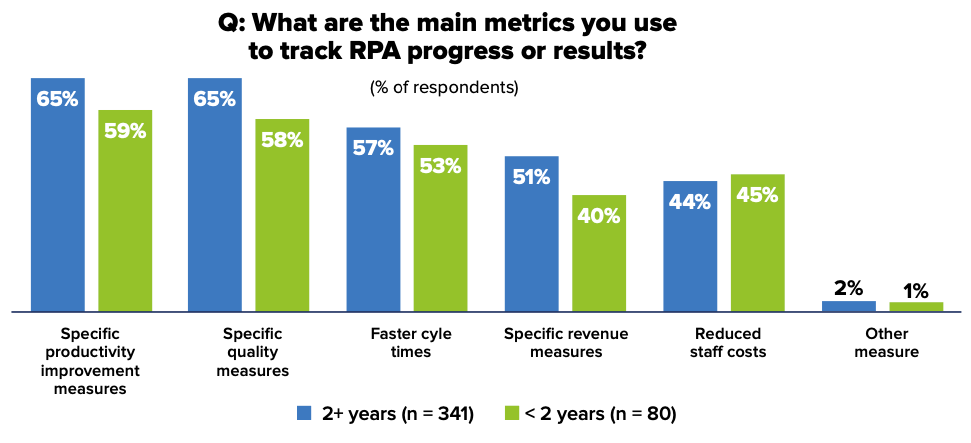The Next Generation of Citizen Developer Programs is Here

Editor's note: For an updated look at successful citizen developer programs, including UiPath customers who have launched citizen development programs that are transforming their businesses and empowering their employees, check out our new e-book.
Original blog post:
In its initial iteration, software automation was reserved for competent coders that could build programs from scratch.
More than a decade later, a lot has changed.
No- and low-code development tools have made it easier than ever for employees without a technical background to build their own automations. These citizen developers are making bigger and bigger impacts within their companies, and enabling outcomes like better customer interactions, more value-added work, and higher profits.
I had the opportunity to sit down with Kevin Kroen, Principal, Intelligent Automation Leader at PwC, and Maureen Fleming, Program VP, WW Intelligent Process Automation Market Research at IDC, to discuss how citizen developers are taking automation to the next level.
If you missed our conversation, there’s still time to catch the replay.
Citizen development programs unlock greater worker leverage
So, why initiate a citizen developer program anyway?
A recent IDC study that focused on this question defined the goal as creating “development skills among workers in business units, enabling them to automate where they see opportunities.”
IT and citizen developers are partners in these types of programs, working together to make an organization’s automation capability as strong as possible.
Nobody understands how tedious certain tasks can be better than the employees who do them every day. But until recently, they tended to assume that these monotonous tasks were a necessary part of their jobs.
Enabling employees to create automations themselves changes that mindset. I’ve seen a shocking shift in the way employees think about their work after they’re trained on how to create their own software robots. Instead of dealing with repetitive tasks on a daily basis, they start to think about how they can automate them and focus on higher value-added work.
As this mindset spreads throughout a company, the entire organization enjoys greater leverage from their workforce. Instead of one unit in, one unit out, companies can realize much greater output from the same number of employees as they delegate their rote tasks to robots.

Fleming agreed with my assessment, and noted that she’s seeing new college graduates start to question why they’re spending their time on low-level tasks, like copying and pasting, when they could create a robot that does that for them.
Despite these benefits, citizen development has been a heated debate within companies. According to Fleming, when the term first surfaced about a decade ago, IT teams had to deal with buggy programs and less user-friendly platforms.
But, thanks to platforms that are easier to use and a more tech-literate workforce, those issues have declined dramatically. By combining subject matter expertise with development know-how, citizen developers are making significant impacts at their companies.
What’s the roadmap for creating a citizen developer program?
When I advise clients, I tell them that citizen development is about the company first, including its culture and objectives. The biggest successes come when an organization identifies what it wants to accomplish, and the level of expertise required to get there. Some companies may have an employee base of technically-advanced engineers that can handle complex automations, while others may only need a light set of tools to achieve their goals.
Regardless, there are three dimensions for measuring success that any company looking to implement a citizen development program should keep in mind:
Employee engagement
Bottom line impact
Customer impact
Throughout my career, I’ve found that companies that look at two or three of these dimensions together outperform those that focus on just one. For example, a call center operator that I worked with focused their attention beyond the bottom line, and saw net promoter scores (NPS) rise, call times decrease, and employees' time spent on more interesting tasks.
Besides these benefits, citizen developers also increase the velocity of impact of automation throughout a company. The aforementioned IDC study found that citizen development’s bottom-up approach, combined with the top-down nature of an automation CoE, impacted 39% more employees than those with a CoE-only approach.

The findings from the IDC report, along with my own experience, suggest that combining the benefits of a CoE with those from a well-planned citizen development program provides the best results.
Effectively managing your citizen developer program
While the specific setup of a citizen development program depends on a company’s unique traits, there are standard practices that tend to be effective across the board.
Let the CoE handle governance
The CoE should be in charge of quality and govern the automations that citizens create. After a user has created an automation, it should be sent to the CoE to review that it aligns with company policies, and is free of bugs that could impact company systems.
UiPath is “productizing” quality assurance mechanisms that help companies shorten the time from automation creation to go-live. Instead of needing to review each citizen-created automation to ensure its compliance, companies can implement controls ahead of time that ensure these programs abide by their rules and regulations.
Kroen mentioned that governance challenges come up a lot with PwC’s clients, including creating enough capacity and segmenting the workforce accordingly:
From our side, the people angle to citizen development has been one of the most challenging. Often when we talk to clients about citizen programs, the governance challenge is the first thing that comes up. The good news is, there’s a lot of interesting technology that’s being deployed in the market to help with the governance process.
Kevin Kroen, Principal, Intelligent Automation Leader at PwC
Training, training, training
Prior to COVID, in-person hackathons were a great way to help employees new to automation get comfortable with the technology. These programs dropped off during the pandemic, but are now making a resurgence.
Other than hackathons, training is necessary to get employees up to speed.
Citizen developers that show a knack for creating automations should be encouraged to help train others, and even take on more development-focused roles within their company.
PwC saw the power of citizen developers and began innovative training programs much earlier than other organizations. It’s an inspiring journey and organizations around the world have used PwC’s learnings to build their own citizen developer program. Just getting started? Kroen has spoken to that as well:
“Don’t worry about getting it perfect on day one. We started in one area and one line of service. It worked, and we rolled it out to our 50,000-person workforce in the United States. Start with the center of excellence and then build your groundswell across individual functions—those two will converge over time.”
Results matter
Stronger technical muscles and happier employees are real benefits of a citizen developer program, but managers and investors often look for more quantitative measurements to assess returns.
While specific productivity improvements tend to be one of the first things managers look for after implementing this kind of program, Fleming mentioned that quality measures should be the focus initially. High quality automations lead to productivity improvements over time.

After focusing on the quality of the automations, managers then start looking at improving cycle times, increasing the top line, and reducing staff costs. Fleming emphasized that the latter doesn’t mean laying people off—rather, many strong citizen developers find new roles within the company where they can have a bigger impact.
Customer satisfaction wasn’t a main focus of the IDC study, but Fleming also noted that it can be a key benefit of citizen developer programs as well.
Don’t underestimate the power of citizen development
I’m confident that citizen development programs will continue to proliferate across industries. The benefits they bring to employees, managers, customers, and investors are undeniable.
Here at UiPath, we’re working every day to enhance our citizen development-related products to make them easier to use, and more effective.
Our technology changes the leverage equation for companies—employees can create much more value from their efforts, leading to career growth for them and better results for their companies.
As Kroen said, we all see a ton of potential for growth in this area. I personally couldn’t be more excited to see how these programs evolve in the coming years.
Want to see our entire conversation? There’s still time to watch the recording.

Chief Product Officer, Amelia
Get articles from automation experts in your inbox
SubscribeGet articles from automation experts in your inbox
Sign up today and we'll email you the newest articles every week.
Thank you for subscribing!
Thank you for subscribing! Each week, we'll send the best automation blog posts straight to your inbox.



